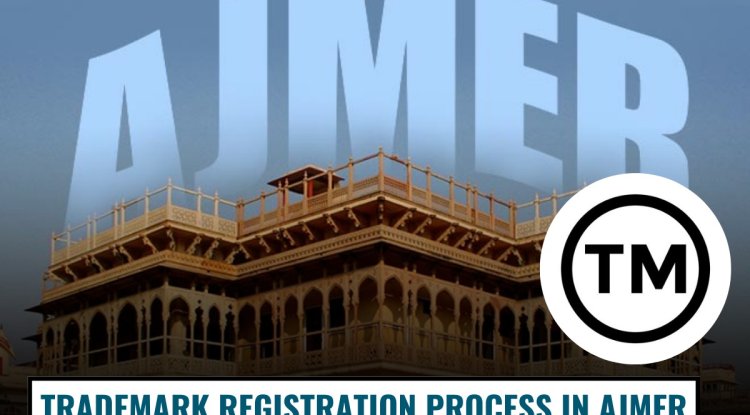Intellectual Property Rights and Social Media: its issues and challenges in the digital era.
Issues relating to Intellectual Property Rights are rarely discussed. Social Media has changed the ways of dissemination of information and has a direct impact on the users. It allows any user to stream, download, upload and publishes information through some common platforms like Facebook, Twitter, Instagram, Myspace, etc. Which makes the user more prone to IP violations? This essay paper investigates the various issues that are surrounding the infringement of copyright, trademark, patents, etc. in the digital era under the umbrella of Social Media. The paper describes the challenges confronted by the owner and the related parties to such transactions.

Introduction
Social media has made great attacks in several areas and fields of human undertaking. Its ever- present nature has raised great concern to humanity and posed a challenge to intellectual property rights and laws.
According to WIPO (2007, p. 16), “The Internet and other constantly evolving digital technologies have opened up exciting opportunities for business. while at the same time presenting complex challenges for the evolution of copyright.”
Intellectual property is now of great concern to individuals, civil society and governments.
This is due to the fact that we now live in a world where a citizens' creativity and knowledge are the factors driving economic growth. Effective Intellectual Property systems, therefore, become essential in unlocking the human potential to create incentives for innovation and platforms for sharing results of human creativity (WIPO 2007, p. 2). in every class, none is secure from the effect and influence of social media technologies.
The challenges of intellectual property in social media:
Today social media has become one of the biggest platforms for advertisements and an important part of any major enterprise. With around 2.82 billion users worldwide as of 2019, the risk for theft of intellectualproperty also increases.
Copying, pasting a document, picture, video, song, etc. is easy, but when you shareor publish original content without the prior permission of its author then it can lead to the violation of thecopyright laws. Social media has a direct impact on its users and is significant for the distribution of information worldwide.
In India, it derives its freedom from article 19(1)(a) i.e., freedom of speech and expression.
The new media technologies that encourage the sharing of contents throughout one-of-a-kind conversation channels have brought approximately new problems in implementing copyright and inspired additional challenges to the primary lawbreaking philosophy of copyright.
The worldwide enjoyment industry especially has fought diligently against the free use, copying, and distribution of digital track, motion pictures, and films.
From enterprise and social networking web sites like Facebook and LinkedIn to media sharing structures with YouTube, social media gives a bunch of possibilities for enterprise owners to promote their agencies and now forms a key part of many enterprise’s advertising and marketing strategies.
However, the increase in the importance of social media also gives a few newdemanding situations. One of the most significant hazards is the risk of intellectual property infringement or infringing third-party IP rights. Likewise, companies must checktheir IP and make sure that it is protected from illegal use.
Intellectual Property infringement on social media can occur in many ways:
• Counterfeit goods – unfortunately, the internet is saturated with fake goods. While in the past counterfeiters tended to exchange via standalone websites and e-commerce platforms like Amazon and eBay, they now seem to be presenting merchandise through social media systems 2016 observe “Social media and luxury items counterfeit: a developing challenge forgovernment, enterprise, and clients international” checked out 750,000 Instagram posts for luxury fashion manufacturers and determined that 20% of them associated with counterfeit/illicit products.
• Unauthorized content– IP infringement can also get up from the unlawful use or distribution of content, which includes or textual content, snapshots or motion pictures.
Every new development has its related challenges. With the arrival of new media, especially social media, intellectual property issues have been confronted with new and sometimes complex challenges.
There is a wide range of issues particularly because, by way of the use of social media, not all customers dispensed original content material, not all customers remained themselves, however, followed the identities of others used the social media structures to bother their actual world enemies and the publication in social media is said to constitute a breach of the holder’s copyright.”
For rights holders, the nature of social media is both a burden and a gift. The upside is that anything that infringes on people's rights could be removed from social media sites before it is widely viewed, downloaded, or spread.
How does Sharing your information and content online and IPR work?
Any person that shares any type of content or information on online social platforms says Facebook, ownsall of the information he shares and can control them through privacy and application settings. For the content covered under intellectual property like videos, photos, etc. the user exceptionally gives theplatform permission which includes a non-exclusive, transferable, sub-licensable, royalty- free, worldwidelicense to use any IP content that is posted online platforms like Facebook, Instagram, etc.
This type of IP license ceases to exist at the time of the deletion of the IP content or deactivation of the account unless theIP content has been shared with others and they have not deleted it.
When a user registers himself on an application or any online platform the platform or application generallyasks for permission to access the user’s content and also the information that others have shared with them.
The application asks for consent just to respect the user's privacy and which type of agreement a user makeswith the platform determines the control over the user's data, content, and privacy.
Deleting content from any online platform is similar to deleting folders and data from the recycle bin on acomputer. But there's always the probability that the removed content may remain and persist, though hidden from other users, in the form of backed-up copies of the data for a reasonable period depending upon the application's policies.
As when you upload or publish any data or content using the public setting,it shows that anybody, including people who are not your friends and followers to have access to that content and can use that information and associate it with you.
What to do if your IP has been infringed on social media?
The amount of content uploaded to the internet, the speed at which it is published and the huge number of people who can be reached on a global foundation, these challenges are additional for owners of intellectual property rights who can be exposed, unknowingly or otherwise, to liability for breach of these rights.
The terms and conditions provided by Social Media websites try to prevent a case of IP infringements and they will take action if notified of a breach. Some platforms, including Twitter, Facebook, YouTube, and Instagram, have specific forms to make it easier for right holders to submit any complaints of infringement through a ‘takedown request’.
Copyright is perhaps the most high-profile problem concerning intellectual property and social media, and it will likely remain that way. It is important to be conscious of the potential to breach the copyright of other people online, as well as being attentive about protecting the copyright of your works.
Using social networking apps, particularly image sharing sites like Instagram, copying and sharing other individuals' images is extremely basic. However, it is usually the case that there is copyright in the image and the owner of the copyright is entitled to have a say in how and where the image is copied.
Social media activity is a great way to showcase and grow a brand. However, the use of social media also exposes companies to potential liability for trademark infringement if another company or brand owner considers that your actions online are negatively impacting or diluting its trademarks. If you share or comment on a trademark owner’s post, it is important to ensure that all trademark rights are being respected and that terms of use policies are being followed.
Case Laws:
File sharing piracy is the most common type of infringement. File sharing means in layman language the uploading and downloading of music movies videos photographs books texts and any data which is shared between users also referred to as ‘Peers’.
Such most common Peer-to-peer (P2P) file-sharing websites are MiniNova, Frostwire, uTorrent, and The Pirate Bay.
one such example of file sharing was the cases of:
Metro-Goldwyn-Mayer Studios Inc. v. Grokster, Ltd.,
Grokster Ltd. and StreamCast Network distributed software that allowed file sharing between peers which led to minimizing the need for costly central servers and server storage also it worked faster. Therefore, it began to be used by universities, libraries, government agencies, corporations, and other private users. As a consequence, many users started sharing copyrighted videos, pictures and music files without authorization. MGM was able to show that some 90 percent of the files shared were copyrighted and as the files did not go to the central location, they could not know what was being shared but they could see the type of file being shared on searching their software. Also, there was no proof that any of these sites to stop copyright infringement. The issue raised here was that a distributor of the product be made liable for copyright infringement by a 3rd party using that product.
The court held that since these distributors did not have any actual knowledge neither do, they take part in sharing the file they cannot be directly held liable for the infringement. The court also took into consideration the doctrine of inducement, if a distributor using its device promotes the infringement of material which can be proved by positive steps which leads to foster infringement it will be considered inducement and the distributor will be considered liable for 3rd party infringement.
Christian Louboutin Sas Vs Nakul Bajaj & Ors.
This case proves to be very significant as it tried to define the responsibilities and liabilities of e- commerce as an intermediary of IP rights for trademark infringement. The defendant operated a website with the name of www.darvey.com and offer products that included luxury shoes by the name of “Christian Louboutin”. Which as a consequence, according to the argument given by the plaintiff “Christian Louboutin”, gave the impression to its clients that it is sponsored by or in some manner affiliated with the plaintiff. Which as claimed by the plaintiff was an infringement on their trademark rights. The defendants on contrary to this claimed that they were merely intermediaries in the transaction and were only used for booking and not selling such products.
Therefore, they are subject to protection under section 79 of the IT Act, 2000.
The court stated that if there is any type of active participation on the part of the e-commerce website, it would exempt there right to protection under section 79 of the IT Act.
It also referred to the “Intermediary Guidelines” which were added in the year 2011. In section 79(3)(b) of these guidelines, observation of due diligence has been made compulsory so that it does not violate anyone’s IPR rights.
The concept of Meta tags was also observed in the case, these are links provided using keywords. If trademarks are used as keywords along with a link. The website will pop-up whenever the associated trademark is searched. The trademark used as the keyword though invisible to the end consumer was held to be illegal by the court.
The court held that the defendant was not an intermediary under section 79 would risk violation if displayed that the goods being sold are fake and gave out the decision that darvey.com would be held liable even as an intermediary for transporting the infringed goods to the customer.
Conclusion
The safety of the intellectual property rights in a brand-new media period calls for the determined attempt of all stakeholders.
Every user of recent media must make a conscious commitment towards the protection of intellectual property rights. This is due to the fact the content consumer nowadays may additionally end up the content producer and right holder tomorrow.
If intellectual property law is rejected as a result of recent media attacks, then the sector is fated as creativity, innovation, organization, and monetary growth and development might be forestalled and the beauty of human existence destroyed.
And this is a long-time system which would require academic education, seminars, workshops, and many others. Which would help improve the degree of information approximately intellectual property rights, the consequences of infringementand which in turn would result in finding the best possible solution of protection.
References:
1. Ozoh, H. C. (1998). Principles and Practice of Advertising. Lagos: Advertising Practitioners Council of Nigeria—APCON.
2. WIPO (n.d). What is intellectual property? Retrieved from http://www.wipo.int/edocs/pubdocs/en/intproperty/450/wipo_pub_450.pd
3. WIPO (2007). World Intellectual Property Organization: An Overview.
4. Boundless (2015). “Digital Media and Intellectual Property Issues.” Boundless Marketing.
Retrieved from:
https://www.boundless.com/marketing/textbooks/boundlessmarketingtextbook/social- media-marketing-15/marketing-research-and-consumer-created-content100/digital- media-and-intellectual-property-issues-496-4041
written by:
Aditya Singh.












